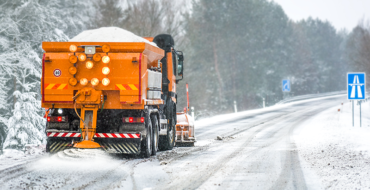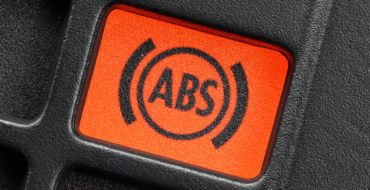Cars and trucks are safer and more reliable than they’ve ever been, but that doesn’t mean that every journey will be trouble free. Canadians drive billions of kilometres every year and use their vehicles to take them on some amazing adventures. Some of those adventures, and even regular drives, won’t go as planned. That’s why you need a roadside emergency kit in your vehicle. Like they say, hope for the best but plan for the worst!
Why You Need a Roadside Emergency Kit

First Aid Kit
A good roadside emergency kit starts with a first aid kit. Bandages, adhesive strips, scissors, tweezers, gauze, and antiseptic are the basics for the small injuries that happen when you travel. Even if your first-aid knowledge is limited, your kit could be useful for other first responders. The more thorough your knowledge and skills, the more comprehensive of a kit you can use, but the basics are always helpful to have in the trunk.
Be Visible With Aa Safety Triangle
Other roadside emergency kit items come in clutch even if there aren’t any injuries. A safety triangle, for example, is an essential. In some countries, it’s mandatory to have one in your car—and for good reason.
Placing roadside warning triangles behind your stopped vehicle make it easier for other drivers to see that you’re stopped. You might be waiting for a tow, changing a tire, or have a passenger who couldn’t wait for the next exit. Whatever the case, you’ll be seen. Especially in bad weather or at night.
Don’t Get Caught Flat Without a Tire Inflator
If your car or truck has a flat tire, a tire inflator instantly becomes a roadside emergency kit essential. Inflators can add air to get you going again quickly. They plug into your 12V power port and can also be used on cycle tires, beach balls, and other inflatables. Some tire inflator kits also come with tire sealants to get you to a NAPA AUTOPRO service center if you have a puncture.
Nobody Wants Road Grime Hands
If you’re changing a tire, a jack that’s more substantial than your factory emergency jack can be helpful. It makes lifting your vehicle easier and safer, but since a floor jack is heavy and bulky, it’s hard to call it an essential.
What is essential are some nitrile gloves. This roadside emergency kit essential will keep brake dust and road grime off of your hands when you’re changing tires, keep them clean if you need a battery boost, and are a must-have if you’re doing first aid. They’re also great around the house for those extra-icky cleaning jobs like drains.
Get a Jump With Portable Power Packs
Jumper cables, or an electrical booster pack, are another essential. Modern vehicles are harder on their battery than ever before due to higher electrical demands. That can leave you with a battery that just doesn’t have enough juice left to start your vehicle. In older cars, the voltage could drop significantly before the battery level was too low, but today it takes only one or two volts to stop the electronics from working.
A set of jumper cables is the easy answer. They sit in your trunk until an emergency and never need maintenance. But you do need another vehicle (or battery) to transfer power to your car.
Instead of cables, you can use a portable jumper pack. They have their own battery inside, which has enough electrical reserve to start a vehicle. They work great, but you do need to check them periodically to make sure they’re properly charged. That means they’re not the best option if you’re forgetful.
This list of a few basics is a great start to your roadside emergency kit. Hopefully you won’t need to use it, but it’s better to be safe than sorry. You can expand a basic kit with hand tools, flares, and a roadside assistance membership. Stash it in your trunk and enjoy peace of mind the next time you travel.











